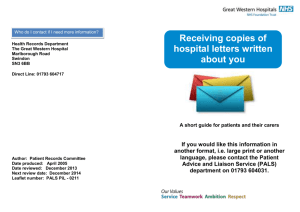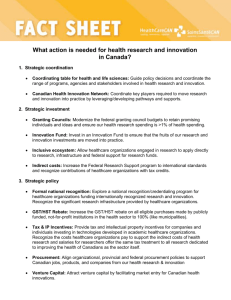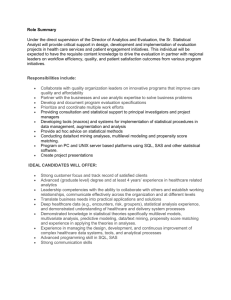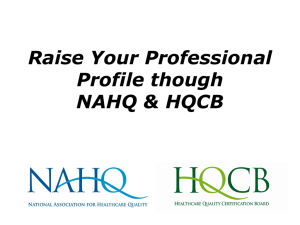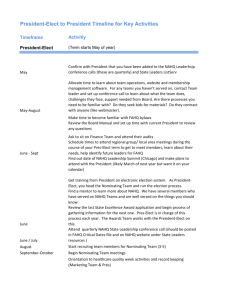Empowering Family Caregivers Assures Successful Acute Care
advertisement
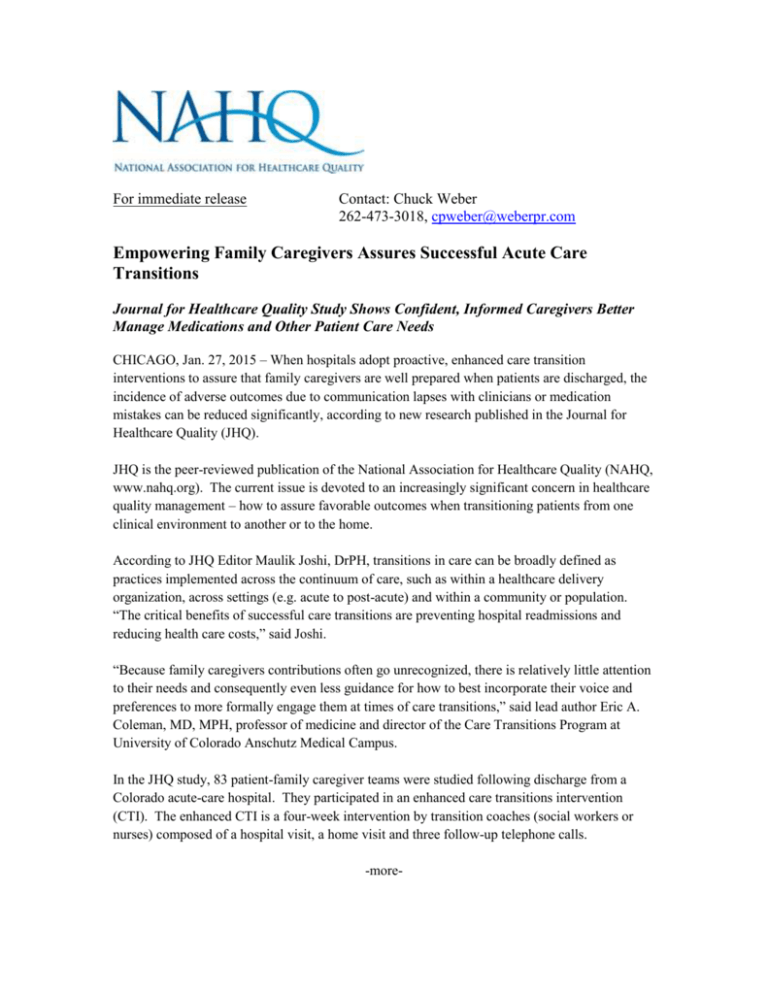
For immediate release Contact: Chuck Weber 262-473-3018, cpweber@weberpr.com Empowering Family Caregivers Assures Successful Acute Care Transitions Journal for Healthcare Quality Study Shows Confident, Informed Caregivers Better Manage Medications and Other Patient Care Needs CHICAGO, Jan. 27, 2015 – When hospitals adopt proactive, enhanced care transition interventions to assure that family caregivers are well prepared when patients are discharged, the incidence of adverse outcomes due to communication lapses with clinicians or medication mistakes can be reduced significantly, according to new research published in the Journal for Healthcare Quality (JHQ). JHQ is the peer-reviewed publication of the National Association for Healthcare Quality (NAHQ, www.nahq.org). The current issue is devoted to an increasingly significant concern in healthcare quality management – how to assure favorable outcomes when transitioning patients from one clinical environment to another or to the home. According to JHQ Editor Maulik Joshi, DrPH, transitions in care can be broadly defined as practices implemented across the continuum of care, such as within a healthcare delivery organization, across settings (e.g. acute to post-acute) and within a community or population. “The critical benefits of successful care transitions are preventing hospital readmissions and reducing health care costs,” said Joshi. “Because family caregivers contributions often go unrecognized, there is relatively little attention to their needs and consequently even less guidance for how to best incorporate their voice and preferences to more formally engage them at times of care transitions,” said lead author Eric A. Coleman, MD, MPH, professor of medicine and director of the Care Transitions Program at University of Colorado Anschutz Medical Campus. In the JHQ study, 83 patient-family caregiver teams were studied following discharge from a Colorado acute-care hospital. They participated in an enhanced care transitions intervention (CTI). The enhanced CTI is a four-week intervention by transition coaches (social workers or nurses) composed of a hospital visit, a home visit and three follow-up telephone calls. -more- Page 2 “Transitions coaches encourage patients and family caregivers to take a more active role in their care, better articulate their needs, and improve their ability to meet those needs,” Coleman explained. “They also help patients and caregivers respond to common challenges in medications management, use of a patient centered personal health record, timely follow up with primary care providers, and ability to respond to red flags that may indicate a worsening condition.” Results of the study showed that using the enhanced CTI significantly improved medication safety, collaborations with transition coaches in resolving discrepancies and errors, and being confident in taking responsibility for implementing the discharge care plan. “With high levels of satisfaction, the enhanced CTI model appears to have applications to local and national efforts aimed at improving the hospital transition experience,” said Coleman. About the Journal for Healthcare Quality The Journal for Healthcare Quality (JHQ) is the first choice for creative and scientific solutions in the pursuit of healthcare quality. Published by Wolters Kluwer Health/Lippincott Williams & Wilkins, JHQ is peer reviewed and issued six times a year. JHQ publishes scholarly articles targeted to leaders of all healthcare settings, leveraging applied research and producing practical, timely, and impactful evidence in healthcare system transformation covering topics in: quality improvement, patient safety, performance measurement, best practices in clinical and operational processes, innovation, leadership, information technology, spreading improvement, sustaining improvement, cost reduction, and payment reform. About NAHQ Founded in 1976 and covering a full spectrum of healthcare specialties, the National Association for Healthcare Quality (NAHQ) is an essential and interactive resource for quality and patient safety professionals worldwide. NAHQ’s vision is to realize the promise of healthcare improvement through innovative practices in quality and patient safety. NAHQ’s 12,000-plus members and certificants benefit from cutting edge education and NAHQ’s unique collective body of knowledge, as well as opportunities to learn from a diverse group of professionals. These resources help assure success for implementing improvements in quality outcomes and patient safety, navigating the changing healthcare landscape, and serving as the voice of quality. Visit www.nahq.org to learn more.




